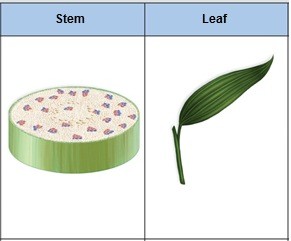Identify this plant as a monocot or eudicot after examining its stem and leaf. 
A. This plant is a eudicot.
B. This plant is a monocot.
C. Not enough information is provided to differentiate the plant as a monocot or eudicot.
Answer: B
You might also like to view...
Which of the following statements is true about photosynthesis and chemical weathering? Select all that apply
A. Both processes release CO2 as a product (i.e., increase atmospheric CO2 levels). B. Both processes use CO2 as a reactant (i.e., decrease atmospheric CO2 levels). C. Both processes are typically associated with the long-term carbon cycle. D. Both processes are typically associated with the short-term carbon cycle.
Members of this phylum have radial symmetry and nematocysts; they may have polyp or medusa
forms (or both) as adults.
a. Nematoda b. Cnidaria c. Porifera d. Rotifera e. Ctenophora
Thinking about the wavelength of light compared to its energy, which of these portions of the electromagnetic spectrum has the highest amount of energy?
A. orange light, at 640 nm B. green light, at 510 nm C. ultraviolet light, at 330 nm D. yellow light, at 590 nm E. blue-green light, at 450 nm
The scientist who published On the Origin of Species by Means of Natural Selection in 1859 was
A. Georges-Louis Buffon. B. Charles Darwin. C. Charles Lyell. D. James Hutton. E. Jean Lamarck.